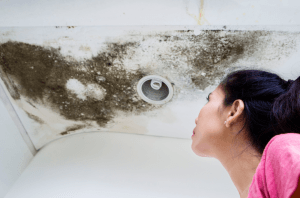Mold in your plumbing system can lead to various health problems and can also damage your pipes and fixtures over time. The good news is that with some attention to detail and a proactive approach, you can effectively combat this menace. Here’s a comprehensive guide to help you eliminate mold from your plumbing system and prevent its return.

1. Identify the Affected Areas
Recognizing and pinpointing where mold has taken hold is your first line of defense. Start by meticulously checking your entire plumbing system. The usual culprits include under sinks, faucet bases, inside damp cabinets, showerheads, and in dark, moist areas like basements and crawl spaces. Employing a flashlight will be handy in unveiling mold colonies that might be lurking in shadowed nooks and crannies.
2. Choose the Right Cleaning Agents
When it comes to tackling mold in your plumbing, the choice of cleaning agent plays a significant role. There’s an array of options in the market, but it’s essential to align your choice with the severity of the mold issue. For those who prefer eco-friendly solutions, natural cleaners like white vinegar and baking soda often prove effective, especially in tackling minor mold growths. They are easy to use, widely available, and gentle on the environment. Yet, if you’re up against a stubborn mold patch or extensive areas of growth, turning to commercial mold removers might be your best bet. These products are formulated specifically to combat and eliminate mold, ensuring a deeper clean.
Another alternative is a mix of bleach and water, a time-tested combination known for its robust mold-killing properties. However, when using bleach or commercial products, always ensure adequate ventilation, wear protective gloves, and adhere to the manufacturer’s guidelines. Following these precautions will ensure the safety of both your household and your plumbing system.
3. Ensure Proper Ventilation
Before diving into the cleanup, open windows and doors to ensure good airflow in the working area. Proper ventilation is vital, particularly if you’re using strong chemical agents. It not only protects your respiratory system but also hastens the drying process post-cleaning, reducing chances for mold to regrow.
4. Scrub the Mold Away
Once you’re all set, it’s scrubbing time. A brush with stiff bristles or a scouring pad can be effective for surfaces that are easily reachable. For the nooks, crannies, and intricate sections of your plumbing, don’t underestimate the power of an old toothbrush. Throughout this process, wearing protective gloves, a mask, and safety goggles is highly advised to safeguard yourself.
5. Flush the System
Thoroughly After cleaning, it’s vital to ensure there’s no residue left behind. Run hot water through your plumbing system. This step aids in flushing out any remaining mold particles and the residues of your cleaning solutions, providing you with a fresh, clean plumbing system.
6. Prevent Future Growth
Now that your system is mold-free, the goal shifts to prevention. Keep areas, especially those prone to mold, dry and well-aerated. Regularly inspect your plumbing for any signs of moisture like leaks or condensation, fixing any issues you come across promptly. Tools like dehumidifiers or even silica gel packets can be instrumental in maintaining low humidity levels in vulnerable zones.
7. Schedule Regular Plumbing Check-ups
Staying one step ahead of mold means consistent oversight. Periodically getting a plumbing professional to assess your system can help detect and address issues before they escalate. They can provide insights into potential mold hotspots and offer solutions to maintain a mold-free system.
Frequently Asked Questions
Can mold in plumbing affect my health?
Yes, mold can cause respiratory issues, allergies, and other health problems.
How often should I inspect my plumbing for mold?
Ideally, check vulnerable areas monthly and get a professional review annually.
Can mold damage my pipes?
Over time, mold can degrade certain materials, potentially leading to leaks or pipe damage.
Are certain plumbing materials more resistant to mold?
PVC and copper pipes tend to resist mold better than traditional iron or steel pipes.
If I smell mold but can’t see it, could it still be in my plumbing?
Yes, mold often grows in hidden areas. If you smell it, it’s best to get a professional inspection.
Conclusion
Mold in your plumbing doesn’t have to be a perpetual challenge. With diligent attention and regular maintenance, you can enjoy a clean and efficient plumbing system. If you’re ever uncertain or require a professional touch, remember that R.S. Andrews offers top-tier plumbing services to ensure your home’s plumbing remains mold-free and in peak condition.

